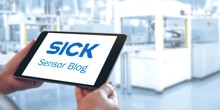Integrating different data sources has become a key factor in ensuring an accurate analysis and a complete view of the information. In recent years, growing awareness of the importance of data has led companies to a data-driven approach to the decision-making processes. By using appropriate tools to monitor and analyse critical data in production, information is used to make decisions based on objective data, removing elements of uncertainty characteristic of the traditional decision-making processes.
In order to make data-driven decisions, it is essential to have visibility and transparency into production performance and to have tools that provide a better understanding of the 'what' and 'why' a particular incident occurred within the plant. If managed correctly, data integration can help reduce costs, improve data quality, and promote innovation in production processes, without disrupting existing data structures and changing automation.
The complexity of sources and data integration
Data transparency and
availability are the core of data integration. However, gaining visibility into production trends is not an easy task:
in fact, data can come from different sources , characterized by various communication protocols, devices and IoT sensors, used to monitor other processes. Each source may indeed have a different structure and format, which makes it difficult to have a single coherent view. To meet this challenge, it is essential to have a
software that simplifies the integration of production data and their aggregation and visualisation in a single graphical interface. SICK's
Field Analytics is a scalable I4.0 software, which allows users to register data, create and configure dashboards to monitor and analyse production key data that allow companies to keep track of plant performance and improve production cycles.
The REST interface (REpresentational State Transfer)
simplifies data integration from different sources.
When used with SICK's intelligent sensors, this solution allows users to monitor critical indicators of the plants' efficiency and status in real-time, 24 hours a day. Continuous monitoring of specific indicators (KPIs), trend analysis and real-time warnings allow for improved and more efficient maintenance, thus reducing potential downtimes due to unexpected failures. Therefore, the software enables Predictive Maintenance during operation which ensures better planning and operating time.
The system can also historicize data and make it available for analysis on past trends and tendencies, which is essential for understanding processes and for a continuous performance improvement.
How does SICK's data integration work
The Field Analytics software is an on-premises (not in the cloud) solution that allows data to be collected from numerous sources and organize it in a simple way, providing "insights" that can improve the responsiveness and efficiency of production processes, without necessarily modifying existing automation.
Dashboard configuration and related widgets are user-friendly and open to numerous customisation possibilities. Thanks to a no code/low code approach, in fact, the software allows a high configurability, whilst maintaining low complexity of use.
In addition, you can manage the different access levels to guarantee safety and readability of information. Thanks to the integrated access management, therefore, information is kept secure and visible only to authorised staff.
In addition to data, companies must also consider the integration of the different types of hardware in the plant. Complete transparency of all important movements of assets and goods, through direct and indirect localisation, is essential to improve the efficiency of production process. This goal can be achieved with SICK's
Asset Analytics software for shop floor asset digitalization.
Asset Analytics is a platform-independent Location Intelligence technology that uses a combination of RTLS and identification technologies to capture raw position and movement data, which is then analysed and evaluated by the software in real-time.
Asset positions and movements are clearly visualized using diagrams and dashboards. The platform provides the data required to digitally map a company value chain and to make the material flow transparent and manage it by tracking and tracing assets.


